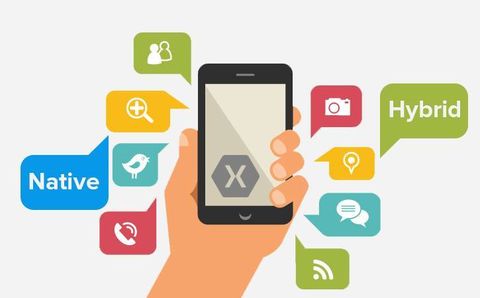Native apps remain specific to a certain platform and can work on that particular platform only. These apps are different for different OSes such as iOS, Android, Windows, & Blackberry. When it comes to iOS, native mobile apps development takes place in Objective-C & Xcode. In case of Android, it is Java & Eclipse. These apps utilize the inbuilt features of that particular OS delivering an optimized performance and quality viewing. They cannot run on any other platform.
On the other hand, HTML5 enabled web apps are the cross platform apps created using HTML5, JavaScript, & CSS. They run on multiple OSes without any need of building separate apps. However, quality and performance have to be compromised largely as they cannot use the inbuilt OS features and because they are created using standard technologies.
To combine the features of both native and web apps, hybrid apps come into play that cover the strong points of both the categories. These apps are created internally with HTML5 within a native technology container on the outside. There are many platforms used to create hybrid apps. However, today we will talk about Xamarin, one of the best platforms to create such apps. Both native apps and hybrid apps have their own importance that cannot be underestimated. Let us know in detail the benefits of having native apps development as well as hybrid apps development (in Xamarin).
Native Apps Development
Native apps are built using the specific Integrated Development Environment (IDE) for specific OSes. iOS Software Development Kit (SDK) used for iOS, Android Software Development Kit (SDK) for Android, and so on. These apps might turn out to be costlier and time-consuming option, but most recommended when you want your apps to excel in both user interface (UI) and user experience (UX).
Reasons to go Native
- Since native apps occupy the home screen, there is more probability of customer and brand engagement
- You can use native apps even offline without being connected to the Internet and getting yourself online
- There is more interaction and personalization associated with a native app with more simplicity and fewer complexities
- Native apps are highly capable of sending reminders and push notifications leading to enhanced brand interaction
- Native apps do make use of browser elements like navigation bars, search bars, and menus that messes up the overall experience. They use app-specific controls of their own, which means you only see necessary components
- Native apps are highly smooth to use with pinch and swipe fluidity
- Native apps are highly light in weight, as they do not accommodate extra layers taking up unnecessary memory
- Since they utilize inbuilt OS features, native apps communicate more easily with GPS, cameras, USB, Bluetooth, WiFi, and other apps present on the OS
Xamarin (Hybrid Apps Development)
Hybrid apps work across platforms and behave like native counterpart. To create such apps in a renowned platform like Xamarin, developers target Mac, Windows, Android, and iOS with a shared C# codebase. With the help of Xamarin platform, developers use same data structures, APIs, and languages for different platforms. Entire apps are written in C#, and the code is shared between platforms. C# covers all the features of Java, Swift, and Objective C. Therefore, you can create similar native apps in C# with cross-platform compatibility. Moreover, what helps Xamarin in doing so, is a standard native UI as well as a native API.
Reasons to choose Xamarin
- Over 20,000 NuGet .Net libraries and Xamarin components
- Use individual IDE in the form of Xamarin Studio for Visual Studio, Windows, or Mac
- You can test your app on more than 1000 real devices from across the globe online
- Automate things making use of C# or Ruby, with the help of a framework known as Calabash that has the ability to test as well as automate an Android or an iOS app, right from the UI level, to scan for continuous improvements or perfect integration
- Receive comparison reports and performance data based on video playback as well as full frame screenshots of every single test. This way you can find out all bottlenecks and regressions present inside
- Get detailed as well as precise errors reporting, to know who are the users influenced by the crash, and what course of actions occur after the crash takes place
- Comprehend the way users behave towards the app likewise which activities they do often, what are their demographics, what issues they have encountered, or which devices they are using
- Let your app data synchronize with external devices through integration. Get notified when the status of an issue changes, an issue occurs multiple times, or when a new issue opens
